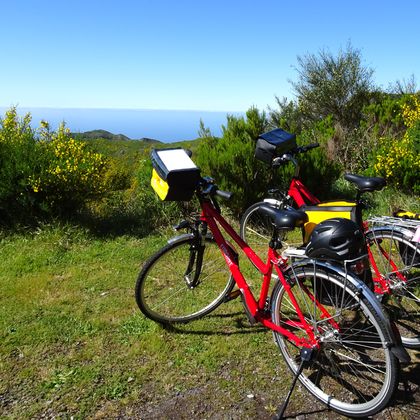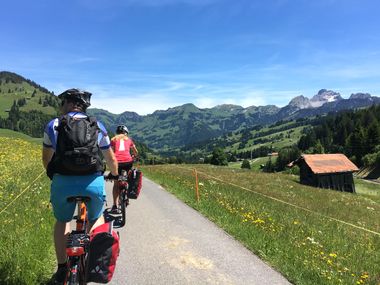Question 2: Which equipment does my bicycle require?
Andreas: With this you basically have to distinguish between one-day tours and tours over several days.
I recommend:
- Pannier and handlebar bag or map holder
- Bicycle repair kit with spare tube
- Tools and tyre pump for emergencies
- Plenty of fluids
Everything else depends on personal requirements
Question 3: What do you need to be aware of when cycling uphill? Are there any tips and tricks?
Andreas: Choosing the correct gear is definitely crucial! The trick is not to go too low but also not to go too high. Just like when cycling on level terrain you also have to adjust the gear to the speed and intensity of the ascent when cycling uphill. My tip: TAKE YOUR TIME! And it is even ok to push your bike at times, BEFORE you collapse and fall off your bike ...
Question 4: Which technique is helpful when cycling uphill?
Andreas: Try to shift your centre of gravity forward and stick to a constant cadence. Initially it sounds really difficult and exhausting. And it is! But with time it becomes easier and soon you will ascend any mountain effortlessly! Another tip: Be patient! Start gently and find the gear which suits you. It is best to change gears as little as possible – it usually costs you momentum
Question 5: With what level of intensity is it best to start on a steep ascent?
Andreas: The biggest advantage cycling professional have over mountain cycling beginners is routine. Hence I recommend you watch out and strive for a consistent cycling speed. No rush and keep calm!
Question 6: Which type of clothing/which outfit is best suited for a cycling tour?
Andreas: Definitely functional, breathable clothing, keeping moisture away from the body. And most importantly: proper padded cycling shorts will increase your level of comfort considerably, so that spending time in the saddle during your bike ride does not become agony.




